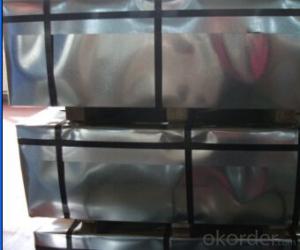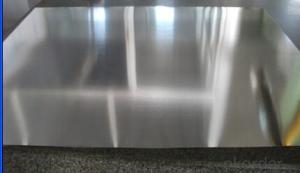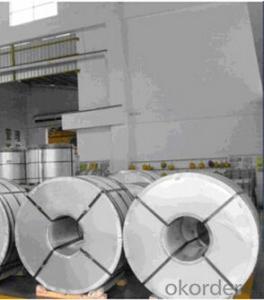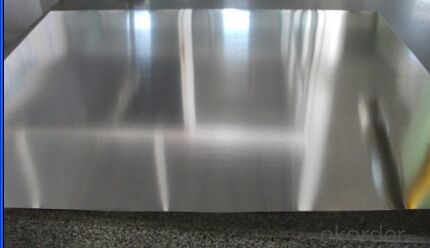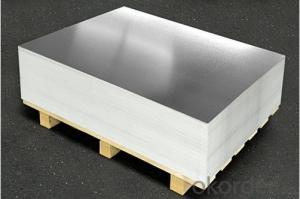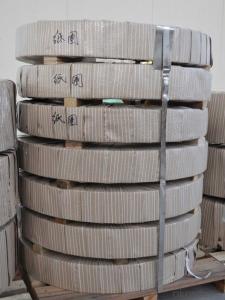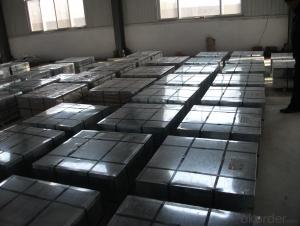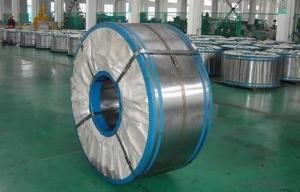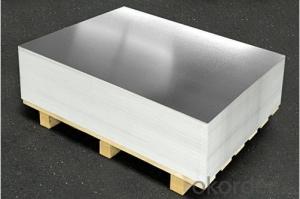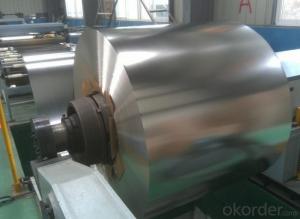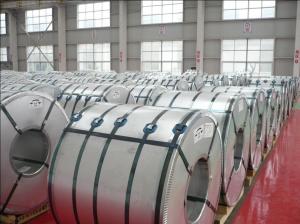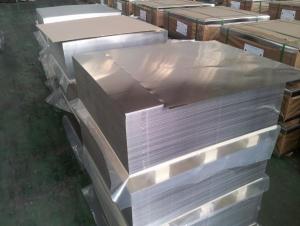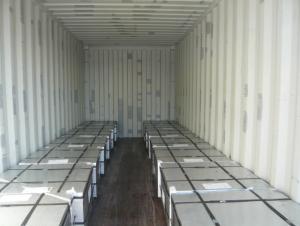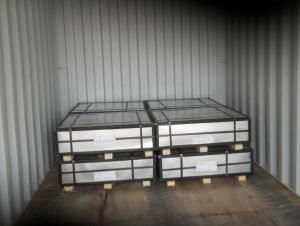ETP for can makers
- Loading Port:
- China Main Port
- Payment Terms:
- TT OR LC
- Min Order Qty:
- -
- Supply Capability:
- -
OKorder Service Pledge
OKorder Financial Service
You Might Also Like
We are one of the main producers in Chinafor tinplate. At present, ourproductivity is about 450000 MT/year. Tinplate size:
TEMPER: T1-T5, DR7-9
ANNEALING:BA/ CA
THICKNESS: 0.15~0.45mm
WIDTH: 600~1050mm
The main product tinplate and tin freesteel are metal package material widely used in food, light industry andchemical industry. We organize our production strictly in accordance with Q/ZYBE1、Q/ZYB E3、GB/T252, GB/T24180, JIS G3303, JIS G3315 and ISO11950 or equivalentstandards. Companies adhere to principles of quality, food safety, environment,occupation, health safety and energy, say "excellent quality to win thetrust of customers, health and safety to gain the trust of the public, cleanenvironment to harvest the trust of the community, safety and health toconvince employees and energy-saving to be trusted by public". We areenjoying the trust and good name regarding to the superior quality and preferservice among the customers. Our products are sold nearly 150 enterprisesincluding Europe, America, Oceania, Middle East and Southeast Asia.
Company management system is healthy, operational mechanism runninggood. After years of effort, base on the introduction, absorption, digestion ofthe advanced technology, techniques, equipment, we gradually set up the uniqueproduction process and technical support system which is market need-orientaland suite to the Chinese condition. In the fierce market competition, ourcompany will continue to pursue the excellence quality and outstanding service,and provide more and better service and service to meet customers demand onmetal package home and abroad.
We has a customer service center whichproviding customers with whole-process service including the pre-sale, sale andafter-service, unified handling customer inquiries and complaints. CustomerService Center adhere to the goal “customer first and response rapidly” andarrange their service work according to the standard procedures. Ourcommitment: ready to accept advice and customer complaints, reply commentswithin 24 hours of treatment, when dealing with customer complaints of qualityissues, upon customer’s request, sent the inspector to the user site to saveproblem within 24 hours (within the province) and 48 hours (other provinces).
- Q: How is tinplate coated with polymer films?
- Tinplate is coated with polymer films through a process called extrusion coating or lamination. In extrusion coating, a molten polymer is extruded onto the surface of the tinplate, forming a thin film after cooling. Lamination involves bonding a pre-made polymer film onto the tinplate using heat and pressure. Both methods provide a protective barrier and enhance the corrosion resistance of the tinplate.
- Q: What are the common packaging formats for tinplate?
- The common packaging formats for tinplate include cans, containers, and tins.
- Q: Can tinplate be used for high-speed packaging lines?
- Yes, tinplate can be used for high-speed packaging lines. Tinplate, which is a thin steel sheet coated with a layer of tin, offers excellent strength and durability, making it suitable for fast-paced packaging operations. Its smooth surface allows for easy printing and labeling, while its corrosion resistance ensures the longevity of packaged goods. Additionally, tinplate's ability to withstand high temperatures and its recyclability make it a popular choice for high-speed packaging lines in various industries such as food and beverage.
- Q: How does tinplate contribute to the reduction of plastic waste?
- Tinplate contributes to the reduction of plastic waste by offering a sustainable alternative for packaging. Tinplate containers, such as cans, are widely used for storing food, beverages, and other products, eliminating the need for single-use plastic packaging. These containers are recyclable and have a high recycling rate, diverting a significant amount of waste from landfills. Additionally, tinplate's durability and protective properties help extend the shelf life of products, reducing food waste and the need for excessive packaging.
- Q: How does tinplate contribute to the protection of pharmaceutical products?
- Tinplate contributes to the protection of pharmaceutical products by providing a reliable and durable packaging material. Its corrosion-resistant properties prevent contamination and ensure the integrity and safety of the products. Additionally, tinplate's ability to block out light and oxygen helps to extend the shelf life of pharmaceuticals, maintaining their effectiveness over time.
- Q: How is tinplate different from other types of metal packaging?
- Tinplate is different from other types of metal packaging because it is made from a thin layer of tin-coated steel, offering superior corrosion resistance and protection to the packaged product. This makes tinplate ideal for food and beverage packaging as it ensures the preservation of taste, freshness, and quality. Additionally, tinplate is lightweight, durable, and easily recyclable, making it an environmentally friendly option compared to other metal packaging materials.
- Q: How does the printing process affect the durability of tinplate?
- The printing process can significantly affect the durability of tinplate. The printing ink used can provide a protective layer that helps prevent corrosion and enhance the tinplate's resistance to external factors such as moisture and abrasion. Additionally, the printing process can also impact the adhesion of the coating on the tinplate, which can further improve its durability.
- Q: How long does tinplate take to corrode?
- Tinplate typically takes several years to corrode, but the specific timeline can vary depending on the environmental conditions it is exposed to and the protective coatings applied to the surface.
- Q: What are the different methods of printing on tinplate?
- There are several methods of printing on tinplate, including lithography, screen printing, and digital printing. Lithography involves transferring an image onto a metal plate, which is then used to print onto the tinplate. Screen printing uses a mesh screen to apply ink onto the tinplate through open areas of the screen. Digital printing utilizes computer-controlled printers to directly apply ink onto the tinplate, allowing for greater flexibility and detailed designs.
- Q: How is tinplate made?
- Tinplate is made by coating thin sheets of steel with a layer of tin through a process called electroplating. The steel sheets are first cleaned and prepared, then immersed in an electrolyte bath containing tin salts. When an electric current is passed through the bath, tin ions are attracted to the steel, forming a thin layer of tin on the surface. This tin coating enhances the steel's resistance to corrosion and provides a shiny and attractive finish.
Send your message to us
ETP for can makers
- Loading Port:
- China Main Port
- Payment Terms:
- TT OR LC
- Min Order Qty:
- -
- Supply Capability:
- -
OKorder Service Pledge
OKorder Financial Service
Similar products
Hot products
Hot Searches
Related keywords
